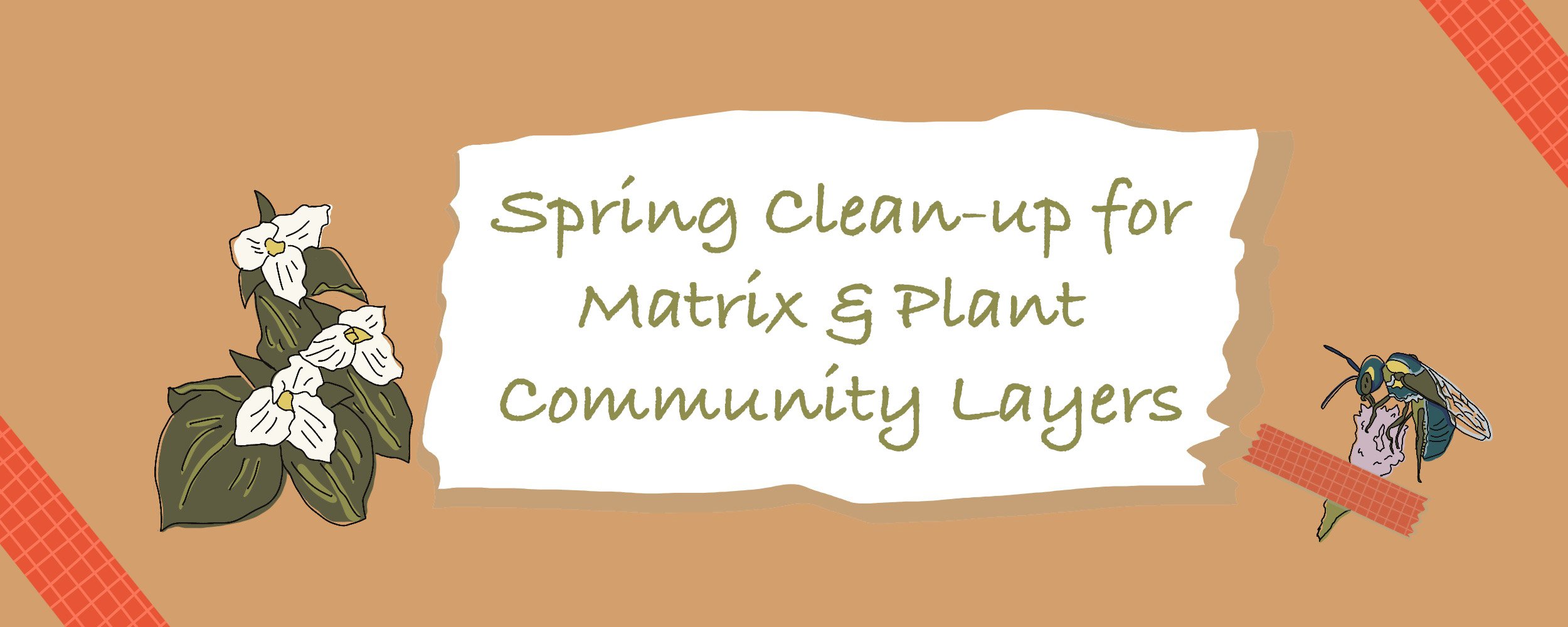Ecological Spring Clean-Up of Matrix Plantings and Layered Plant Communities
I believe in matrix planting and layered plant communities. Combined, these two garden design principles imitate natural ecosystem very closely. Plus, once established, this means less weeding for you and plants play better together.
Matrix planting is a style often attributed to Piet Oudolf. I developed a great appreciation for matrix plantings while gardening at the High Line. Simply put, matrix gardening is covering the garden bed with groundcovers and then planting into that layer with perennials, shrubs, and trees. The groundcovers become a living mulch.
I first learned of layered plant communities when I read, “Planting in a Post-Wild World” by Thomas Rainer and Claudia West. It’s no secret Claudia West is my hero. Think of planting into the matrix/groundcover layer with a “structural layer,” like trees and shrubs to provide focal points and height, and a second layer sandwiched in between referred to as a “seasonal layer.” This yummy filling is made up of perennials strutting their stuff Spring thru Fall, as well as Winter because as Piet Oudoulf always says, “Brown is a color.”
How to Clean Up Specific Garden Layers Gently
Pollinator-Friendly Perennials such as Joe-Pye Weed, Asters, and Black-Eyed Susan have native bees nesting inside their hollow, pithy stems and last year’s seed heads feed birds like goldfinches, sparrows, and chickadees. Wait until late Spring before cutting these back. Extra wildlife-friendly bonus: When removing stems, bundle them upright in a protected area so any lingering pollinators can still emerge.
Woodland garden and native shade plants like ferns, Solomon’s Seal, and Wild Ginger rely on the natural leaf litter for insulation, nutrients, and to build healthy soil. Minimal disturbance is best. Since these plants grow in nature under trees, it’s especially important to remember to leave decomposing leaves in place for moisture retention. Cut back dead foliage gradually. Leave the discards in a brush pile for habitat.
Native Ground Covers like Wintergreen, Wild Pinks, and sedges thrive under a light leaf cover and regenerate naturally. Many are evergreen, or semi-evergreen, and retain growth from the previous year. Remember to gently rake (by hand if needed) to loosen matted leaves without damaging spreading roots. Also, cut back old foliage carefully and sparingly, and avoid smothering with commercial mulch.
Native shrubs like Serviceberry, Spicebush, Elderberry, and Winterberry Holly bloom on old wood. Many native shrubs are early Spring bloomers so it’s important to wait to prune until after they flower. Keep in mind to only remove the dead wood in early Spring. Avoid over-mulching as these shrubs prefer natural leaf litter instead.
I live and garden in the Northeast. The final post in this series will provide examples of common pithy-stemmed perennials, grasses and sedges, as well as some shrubs and trees native to this region, and some of the pollinators they provide overwintering habitats for in the early Spring.
Just jumping in now? Catch up on now on the Gentle Art of Ecological Spring Garden Clean Up with New Habits, A Simple Schedule, and 6 Reasons Why. Make sure to not miss out on the next post by signing up below.

